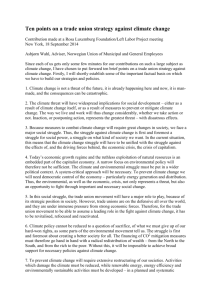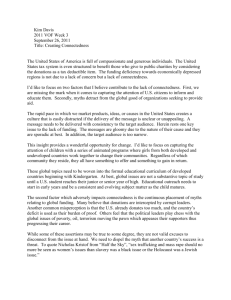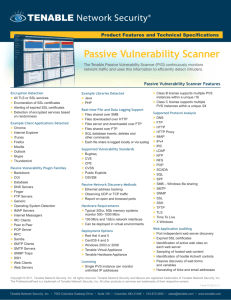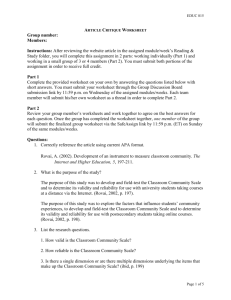As this course comes to a close, I find myself even more eclectic
advertisement
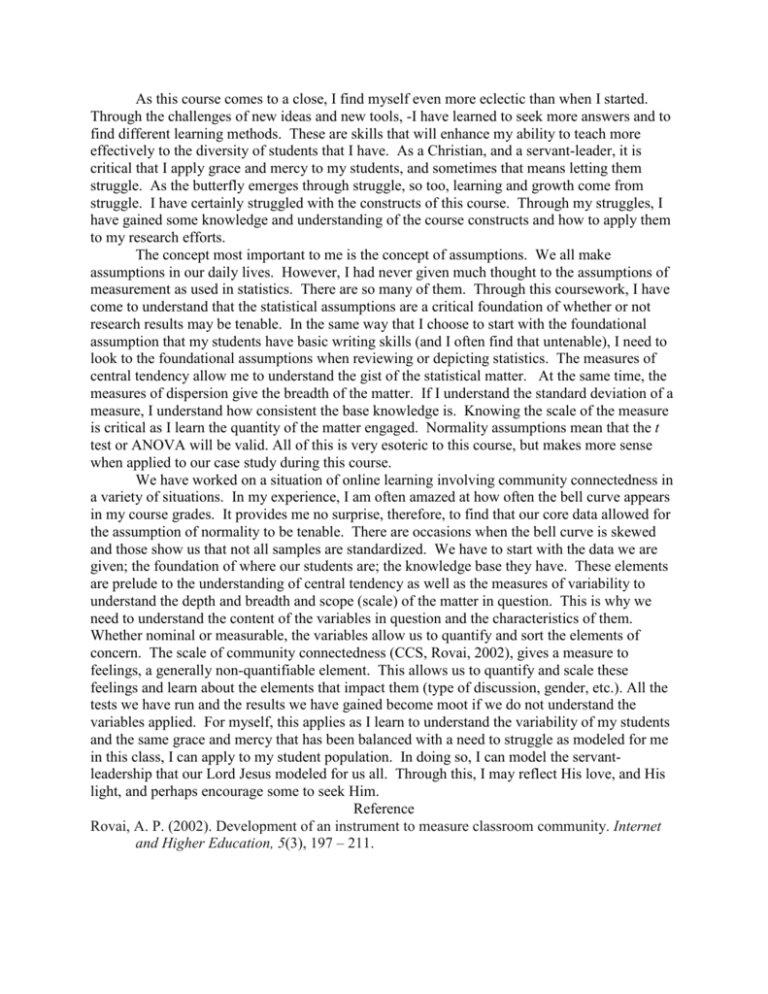
As this course comes to a close, I find myself even more eclectic than when I started. Through the challenges of new ideas and new tools, -I have learned to seek more answers and to find different learning methods. These are skills that will enhance my ability to teach more effectively to the diversity of students that I have. As a Christian, and a servant-leader, it is critical that I apply grace and mercy to my students, and sometimes that means letting them struggle. As the butterfly emerges through struggle, so too, learning and growth come from struggle. I have certainly struggled with the constructs of this course. Through my struggles, I have gained some knowledge and understanding of the course constructs and how to apply them to my research efforts. The concept most important to me is the concept of assumptions. We all make assumptions in our daily lives. However, I had never given much thought to the assumptions of measurement as used in statistics. There are so many of them. Through this coursework, I have come to understand that the statistical assumptions are a critical foundation of whether or not research results may be tenable. In the same way that I choose to start with the foundational assumption that my students have basic writing skills (and I often find that untenable), I need to look to the foundational assumptions when reviewing or depicting statistics. The measures of central tendency allow me to understand the gist of the statistical matter. At the same time, the measures of dispersion give the breadth of the matter. If I understand the standard deviation of a measure, I understand how consistent the base knowledge is. Knowing the scale of the measure is critical as I learn the quantity of the matter engaged. Normality assumptions mean that the t test or ANOVA will be valid. All of this is very esoteric to this course, but makes more sense when applied to our case study during this course. We have worked on a situation of online learning involving community connectedness in a variety of situations. In my experience, I am often amazed at how often the bell curve appears in my course grades. It provides me no surprise, therefore, to find that our core data allowed for the assumption of normality to be tenable. There are occasions when the bell curve is skewed and those show us that not all samples are standardized. We have to start with the data we are given; the foundation of where our students are; the knowledge base they have. These elements are prelude to the understanding of central tendency as well as the measures of variability to understand the depth and breadth and scope (scale) of the matter in question. This is why we need to understand the content of the variables in question and the characteristics of them. Whether nominal or measurable, the variables allow us to quantify and sort the elements of concern. The scale of community connectedness (CCS, Rovai, 2002), gives a measure to feelings, a generally non-quantifiable element. This allows us to quantify and scale these feelings and learn about the elements that impact them (type of discussion, gender, etc.). All the tests we have run and the results we have gained become moot if we do not understand the variables applied. For myself, this applies as I learn to understand the variability of my students and the same grace and mercy that has been balanced with a need to struggle as modeled for me in this class, I can apply to my student population. In doing so, I can model the servantleadership that our Lord Jesus modeled for us all. Through this, I may reflect His love, and His light, and perhaps encourage some to seek Him. Reference Rovai, A. P. (2002). Development of an instrument to measure classroom community. Internet and Higher Education, 5(3), 197 – 211.





